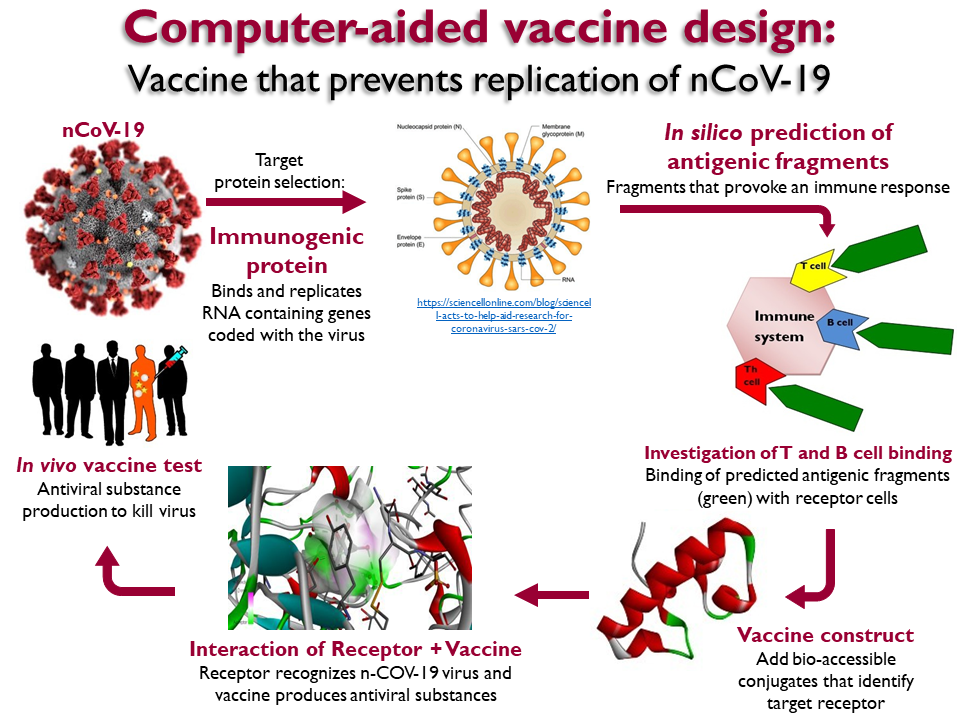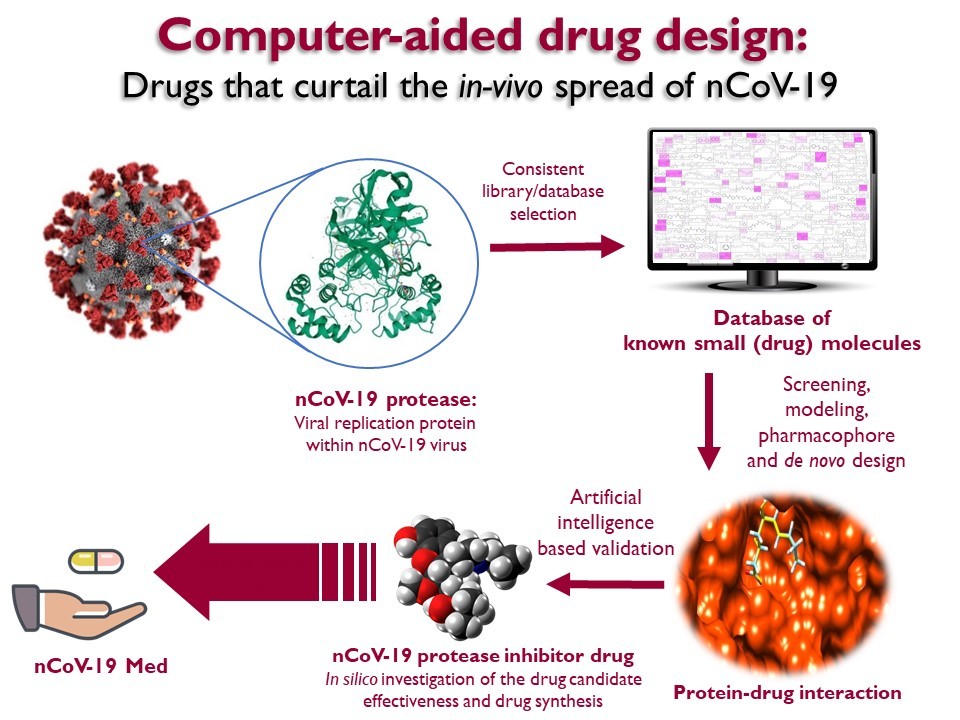Building on her expertise in immunomics and vaccine engineering, Kaliamurthi focuses on identifying epitope segments from a highly immunogenic SARS-CoV-2 protein with potential to induce both humoral (B-Cell) and cellular (T-cell) mediated immunity against COVID-19. Such protein binds to positive single-stranded genomic RNA, a necessary step for the assimilation of viral genetic material, and is strongly implicated in replication-transcription processes. Computer simulations of a vaccine candidate based on two identified epitope segments suggest interaction with an immunogenic target receptor. The vaccine complex has been chemically synthesized with high purity and, while vaccine sensitization studies are in progress, further modeling is under way to discover perhaps even more effective, vaccine candidates.
COVID-19 Research Happens in CERMM
The emerging COVID-19 (Coronavirus disease 2019) global pandemic is caused by 2019-Novel Coronavirus (SARS-CoV-2 or nCoV-19), the new member of the coronaviruses (CoVs) family of enveloped and single-stranded ribonucleic acid (RNA) viruses that have been responsible for previous zoonotic (SARS and MERS) infectious outbreaks. Drs. Satyavani Kaliamurthi and Gurudeeban Selvaraj, Mitacs Academic Visitors in the Centre for Research in Molecular Modeling, are advancing research to fight the deadly virus with computer modeling and simulations in two main directions: the development of a chimeric vaccine candidate (to prevent the disease) and the search for an antiviral protein-inhibitor drug target (to curtail the disease once contracted).


The structure of the nCoV-19 main protease (3CL protease) has recently been reported, and because of its essential role in mediating nCoV-19 viral replication and transcription, it is an ideal antiviral drug target. Selvaraj is screening potential candidate drugs for targeting the virus main protease with computer-aided (de novo pharmacophore-based) drug design, artificial intelligence (neural network exploration of target libraries), docking and biosimulations. Collaborators are preparing to synthesize the lead compounds from this investigation for experimental validation (pre-clinical models) and to possibly inform the rational computer-aided design of better drug molecules via a synergistic approach.
Drs. Satyavani Kaliamurthi and Gurudeeban Selvaraj were awarded post-doctoral scholarships from Mitacs to visit the Centre for Research in Molecular Modeling (CERMM) as part of a developing partnership with the Centre for Interdisciplinary Sciences – Computational Life Sciences, Henan University of Technology, China. The team of researchers implicated in this collaboration includes Profs. Gilles H. Peslherbe (CERMM, Concordia University) and Dongqing Wei (CERMM, Henan University of Technology and Shanghai Jiao Tong University).

